
 Online Service
Online Service
 Top
Top
 Service
Service
 Feedback
Feedback
Acid corrosion inhibitor BA1-11

Appearance:dark red
PH:<=6
Flash Point (Closed-up) ,('C ):beyond 61
Density, (g/cm3):1.0-1.2
Analysis Features:miscible in water and acid
 You May Like
You May Like

Product details

HCl of any strength has an undesirable reaction on steel. The amount of damage will depend upon contact time, acid strength, and temperature conditions. As bottom hole temperatures increase, the effectiveness of many moderate temperature acid inhibitors decreases below desirable protection levels. The corrosive action of acid on steel at high bottom-hole temperatures can be greatly reduced at temperatures up to 350°F)by adding BA1-11 to the acid mixture.
Applications
Features and Benefits
Technical Data
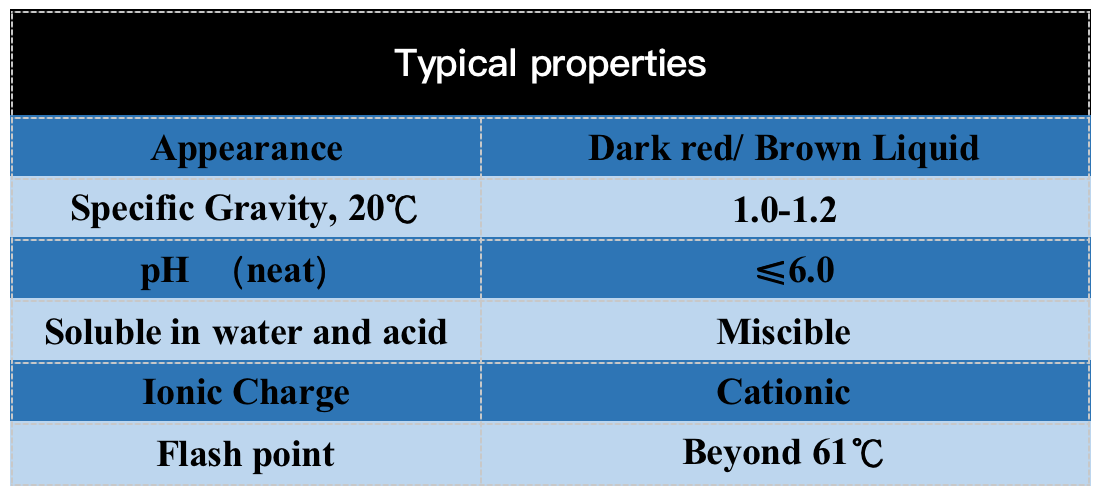
Usage
GALLONS BA1-11 PER 1000 GALLONS ACID
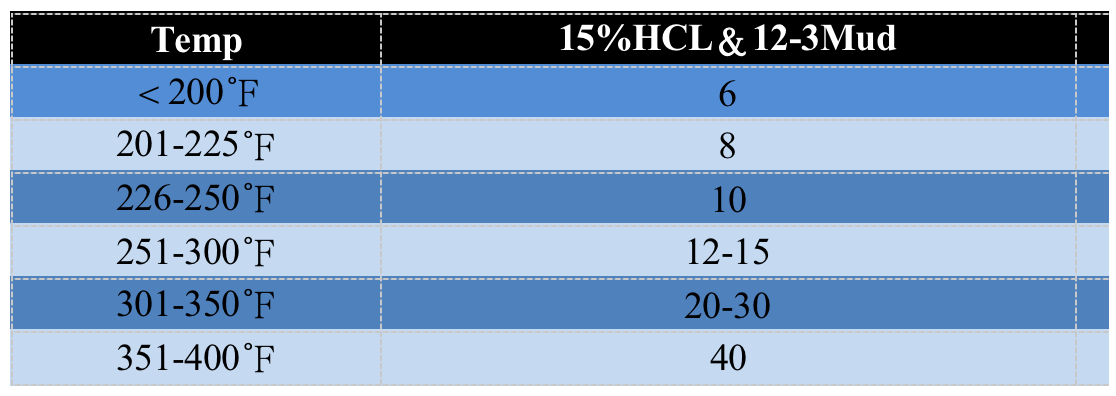
Concentration is dependent on acid type, strength, bottom-hole temperature, contact time, and additional additives.
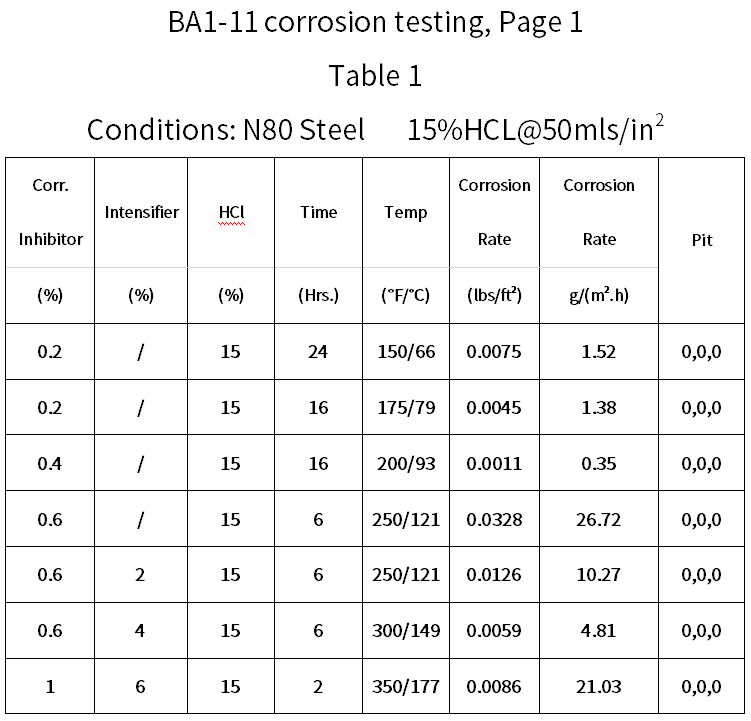
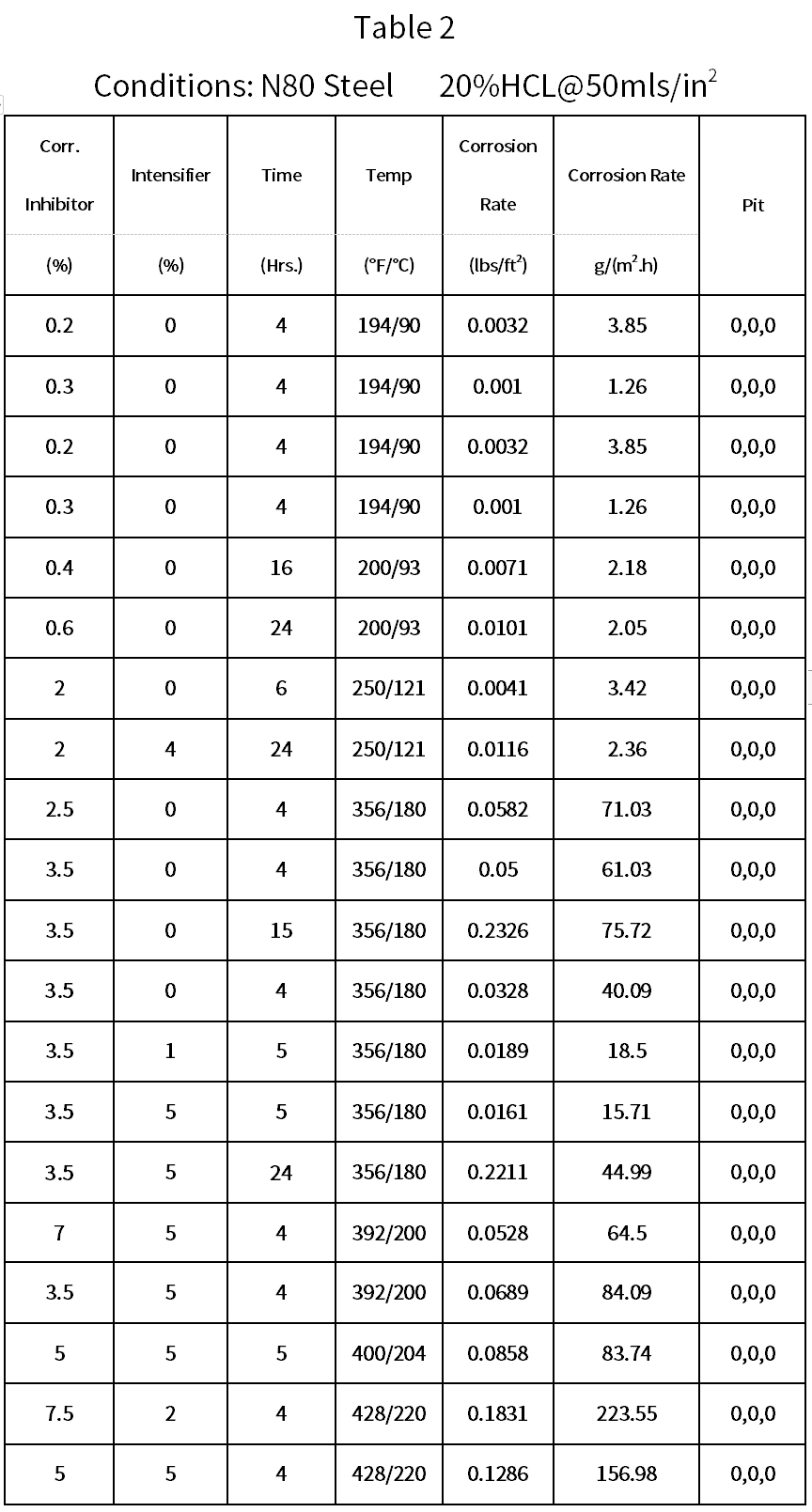
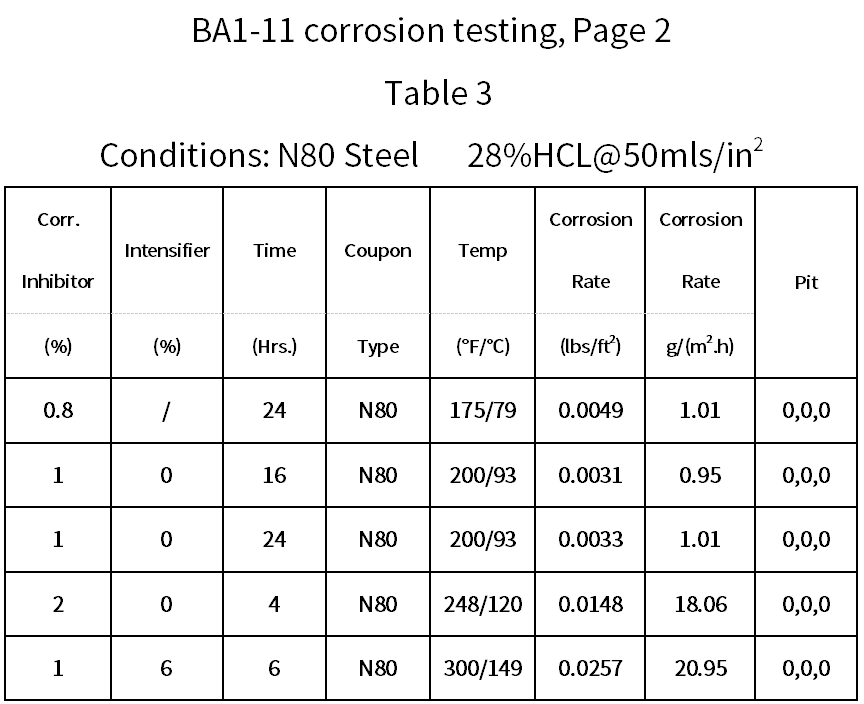
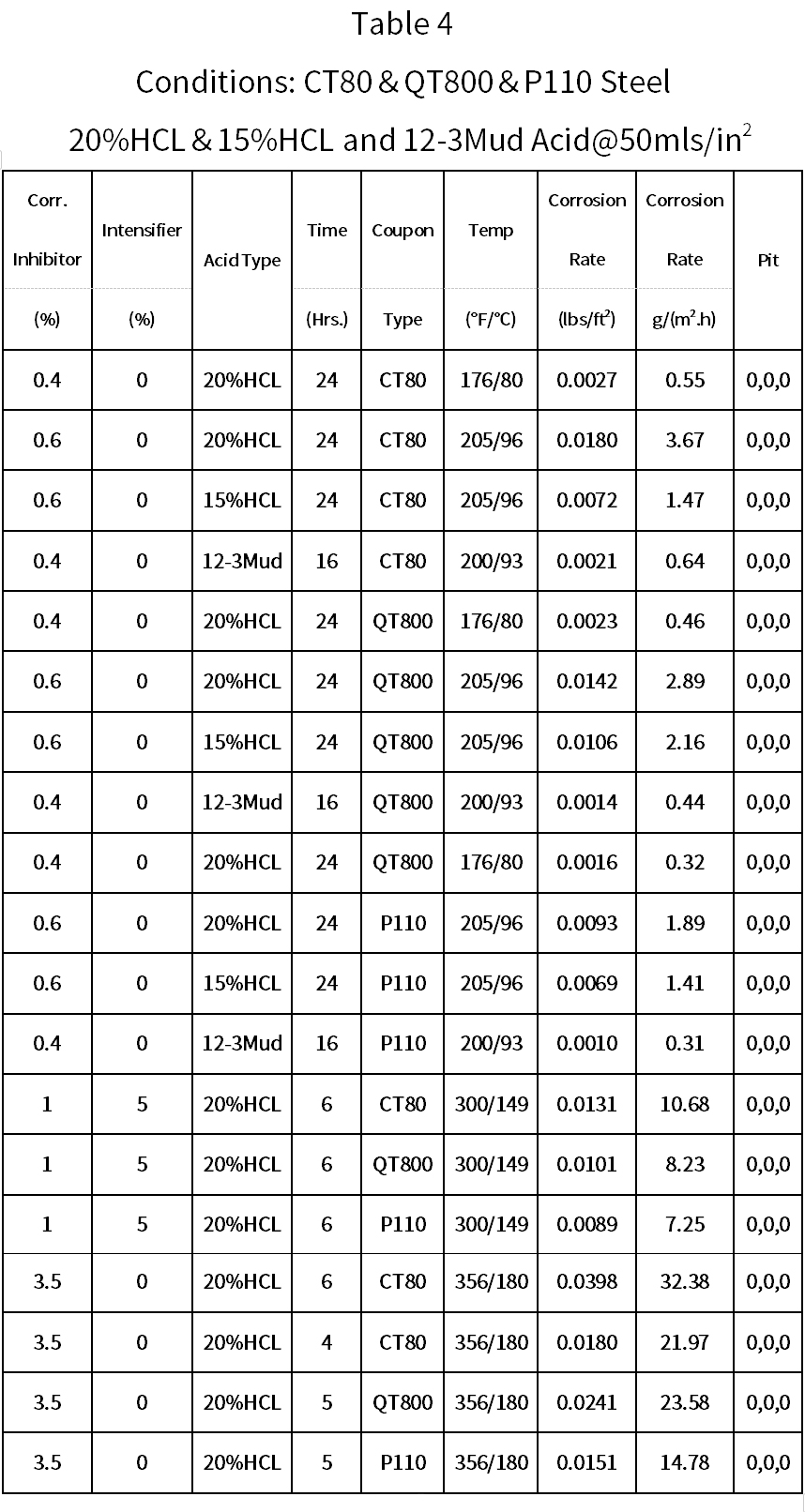
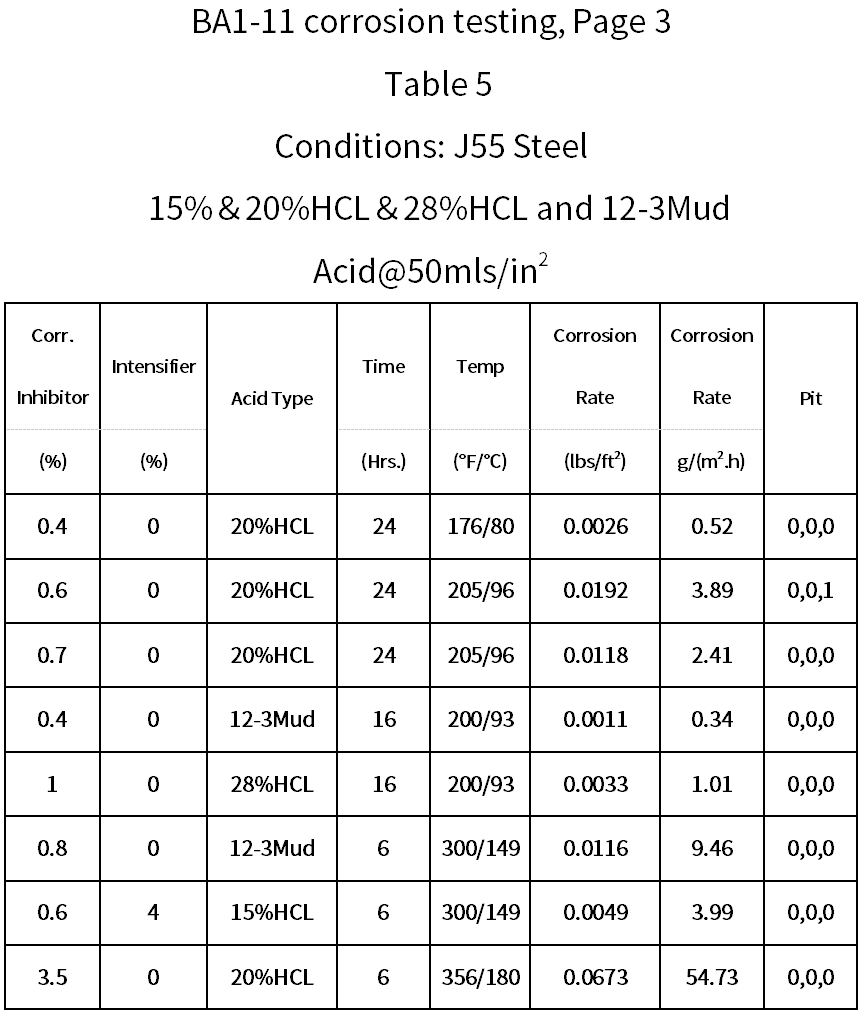
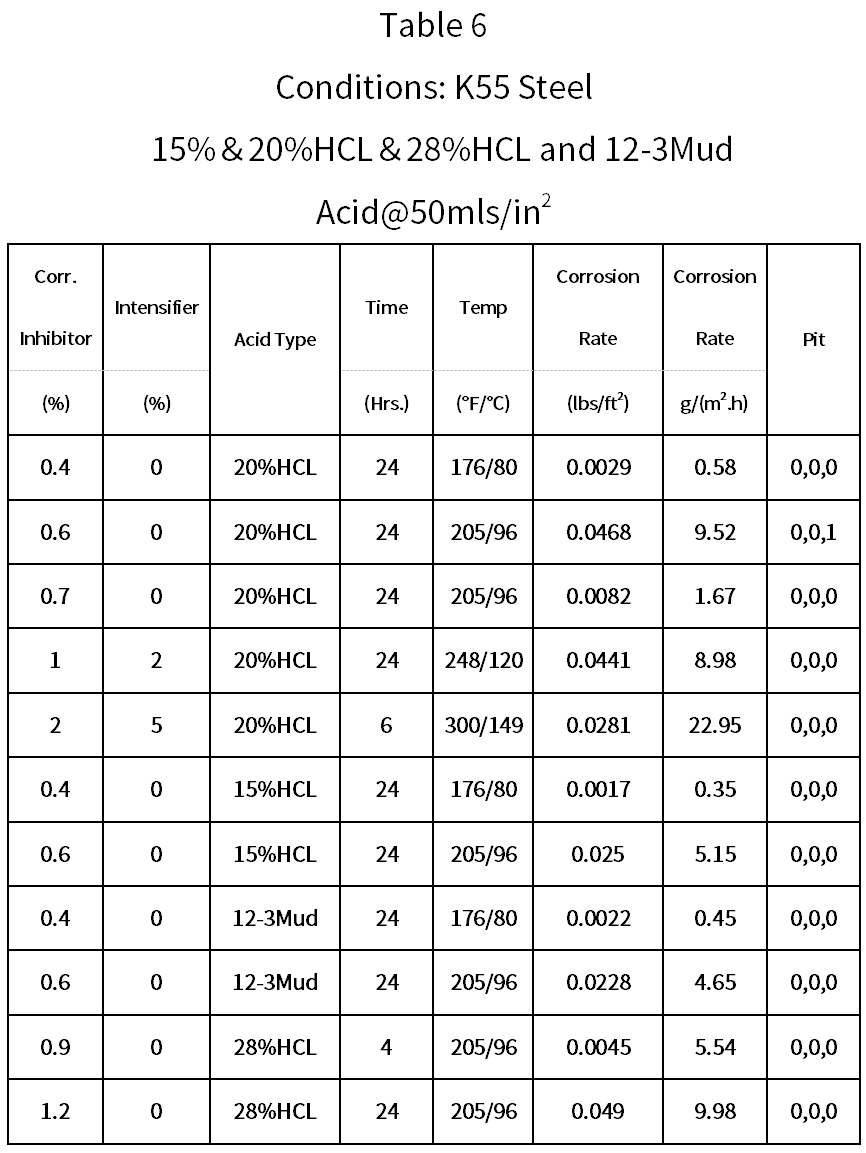
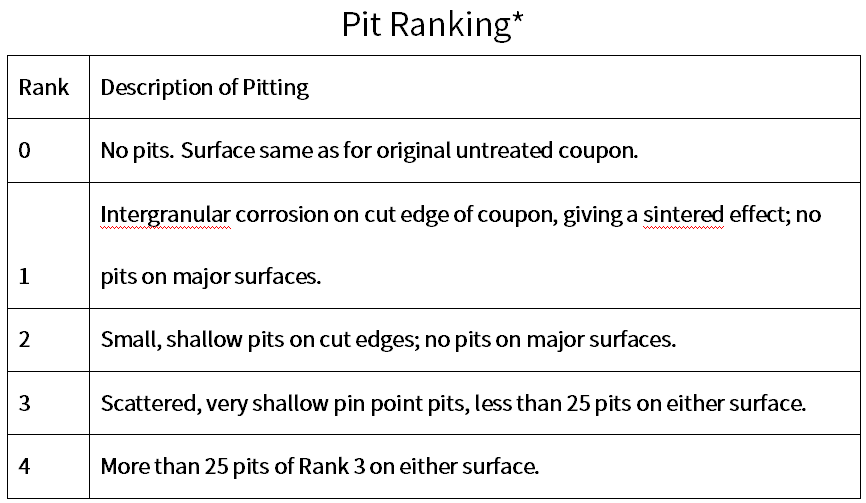
Pitting represented by Ranks 1 through 4 usually are not considered serious . Ranks 1 and 2 are on surfaces that normally do not occur in oil well tubular goods . This corrosion depends largely on Ihe method of pipe manufacture, for example, heat treatment. Ranks 3 and 4 frequently are accompanied by very low corrosion rates and often have been observed with arsenic inhibitors.
*-SPE 5644,C.F.Smith,F.E.Dollarhide & Nancy J.Byth; Dowell. Presented at 50th Annual Meeting of SPE, Dallas, TX9/28-10/1/75.
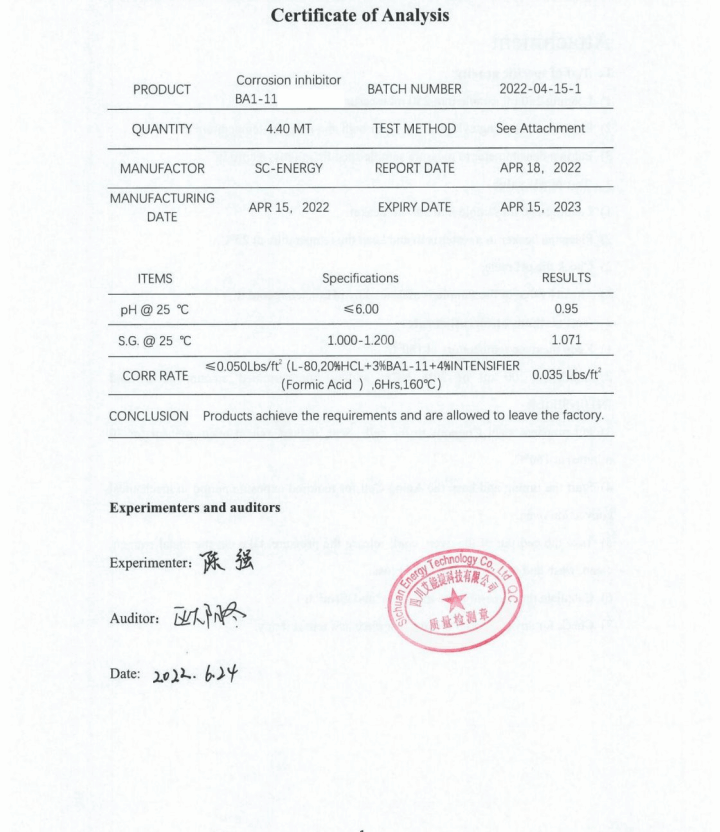
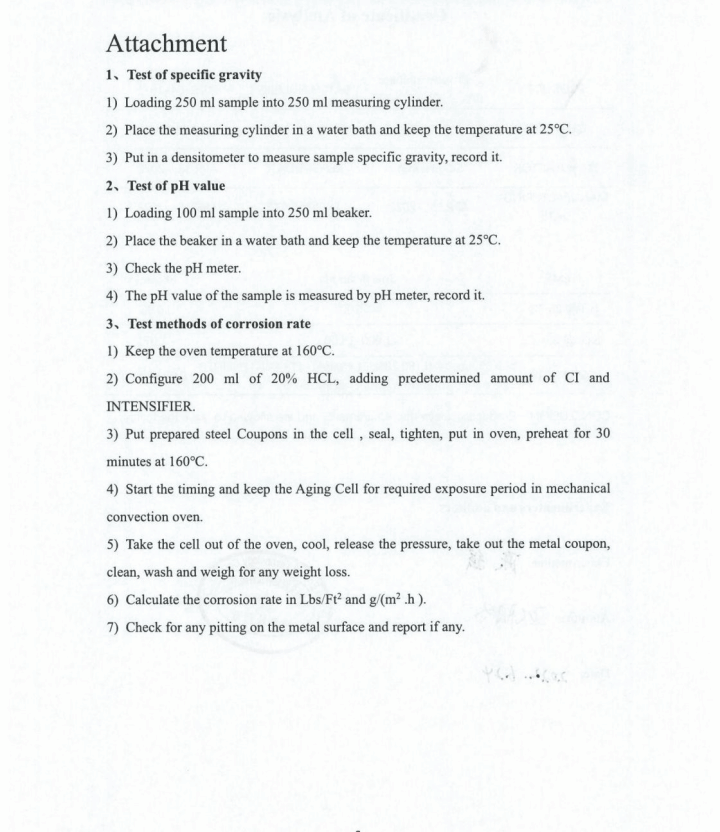
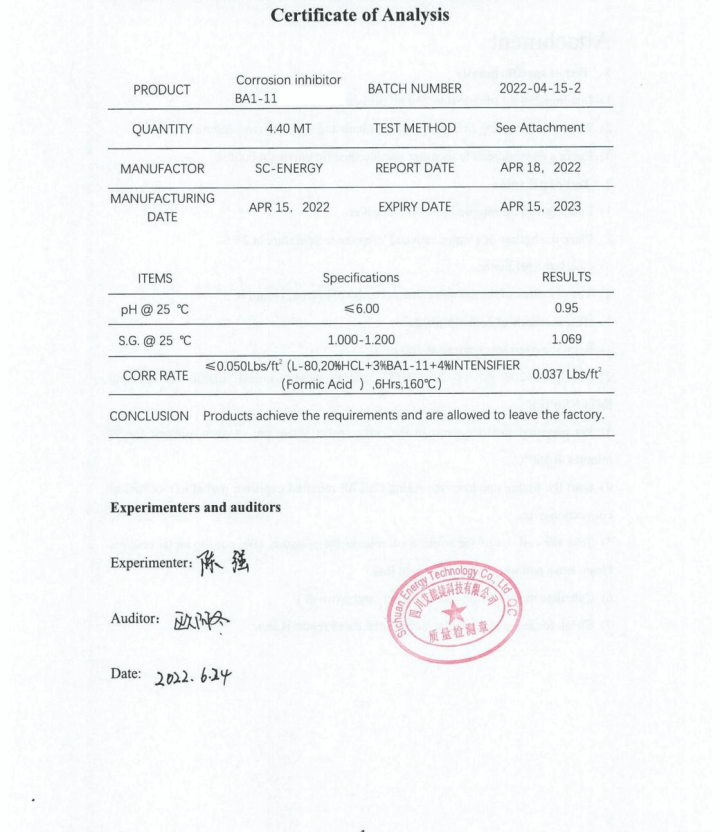
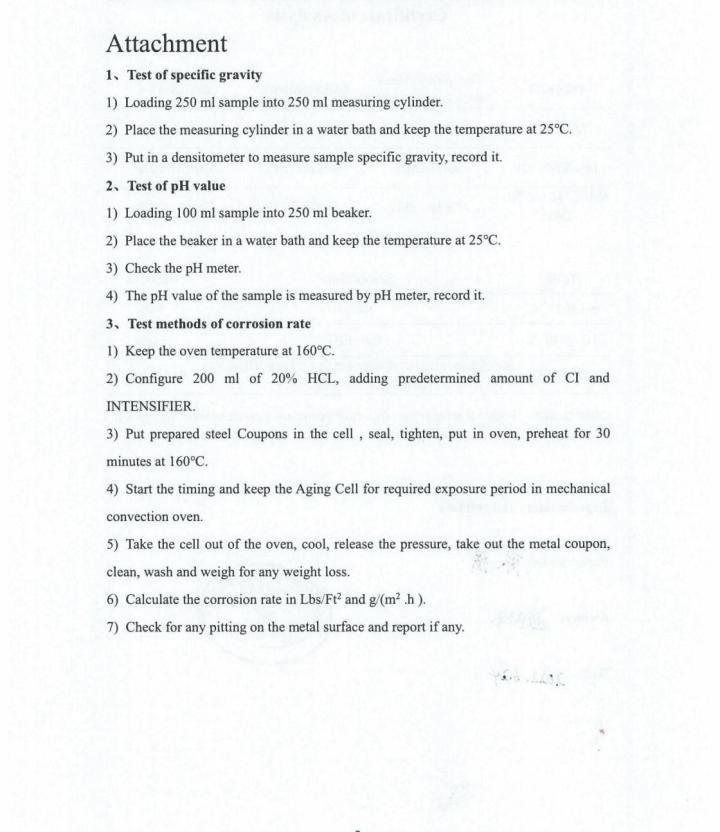
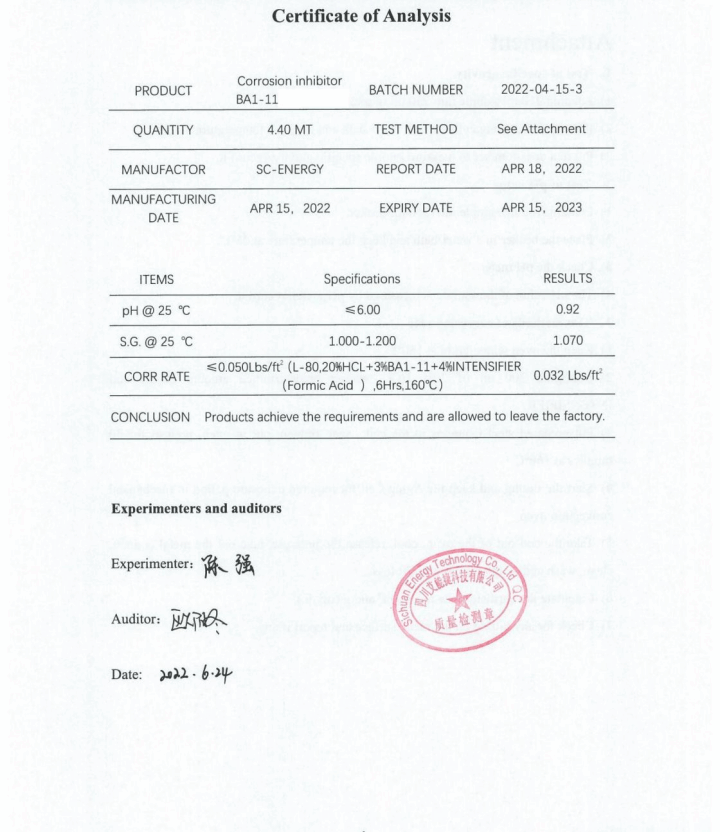
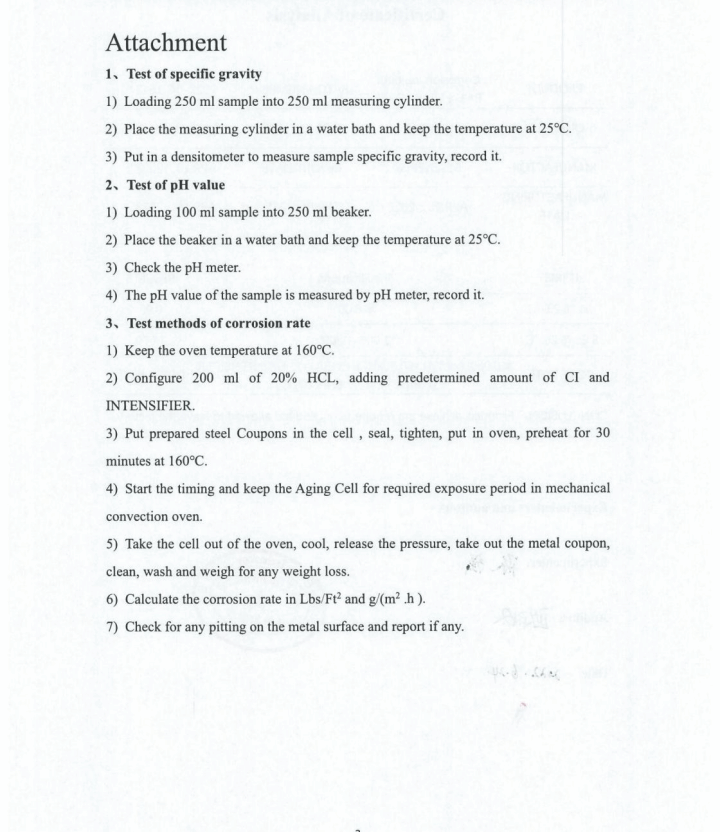


Global Hotline
+86 400-881-5588
If you have any questions, please contact the customer service email: servic@atoilgas.com
Service Time:
Monday to Friday, 10:00 to 17:00 Beijing Time
 Scan and follow us
Scan and follow us